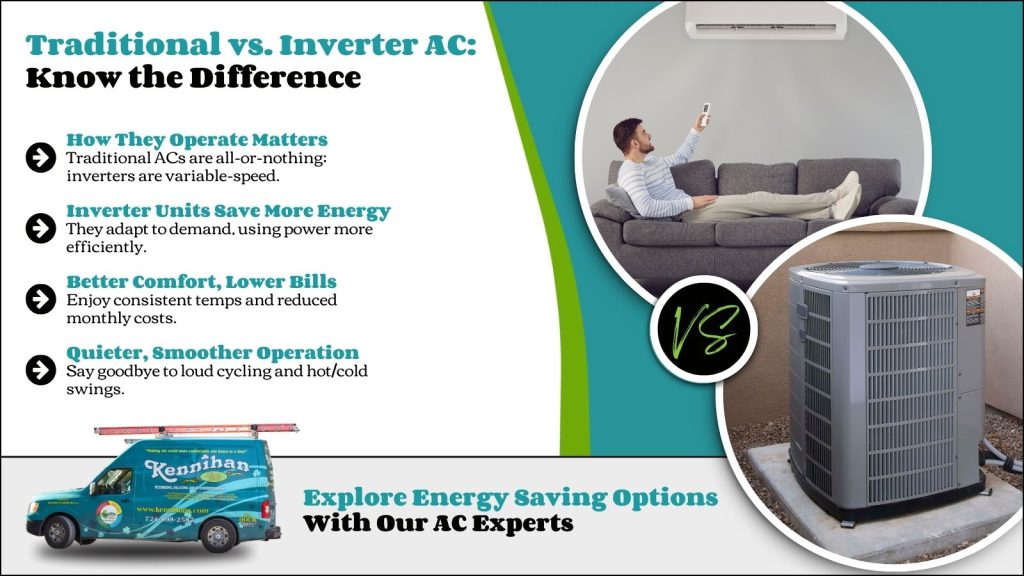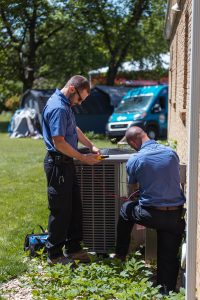If you’re in the market for a new air conditioner, you’ve likely come across the term “inverter AC.” While traditional central air conditioners have been the standard in American homes for decades, inverter technology is becoming increasingly popular—and for good reason. But what exactly sets an inverter AC apart from a conventional unit, and is the upgrade worth it? Let’s break down the key differences and what they mean for your comfort and your wallet.

How Traditional ACs Work
A standard central air conditioner operates on a simple on/off cycle. When your indoor temperature rises above your thermostat setting, the unit turns on at full power. Once the desired temperature is reached, it shuts off. This cycle repeats multiple times per hour during hot weather. While effective, this method isn’t the most efficient.
Every time the system starts up, it draws a surge of electricity. And since it’s either running at full capacity or not at all, energy use is often higher than necessary. This constant stop-start operation can also lead to more wear and tear on the compressor, the most expensive part of the system to replace.
What Makes Inverter ACs Different
Inverter air conditioners, on the other hand, use variable-speed technology. Instead of running at 100% power and shutting off, the compressor adjusts its speed continuously based on the cooling needs of your home. Think of it like a car cruise control system—it ramps up when needed and slows down to maintain a consistent temperature.
This modulation allows the system to maintain a more stable indoor climate, avoid unnecessary energy spikes, and reduce stress on the components. It also means that the unit is rarely operating at full blast, which significantly cuts down on electricity consumption.
Energy Efficiency and Cost Savings
One of the biggest advantages of inverter ACs is energy efficiency. By avoiding the energy-intensive start-up process and operating at lower speeds most of the time, inverter systems can use up to 30-50% less energy than traditional units. Over time, that translates to major savings on your monthly utility bills.
While inverter ACs often come with a higher upfront cost, the long-term energy savings can more than make up for the difference. Many homeowners begin to see a return on investment in just a few years.
Comfort and Noise Reduction
Because inverter ACs operate continuously at lower speeds, they offer more consistent indoor temperatures with fewer hot or cold swings. Traditional systems, by comparison, may leave you feeling too warm or too cold as they cycle on and off.
Inverter models are also noticeably quieter. Since they rarely need to operate at full capacity, the noise level is significantly reduced—making for a more peaceful indoor environment.
Worth the Upgrade
The core difference between inverter and traditional air conditioners comes down to how they manage energy and temperature control. Inverter ACs are more efficient, quieter, and deliver more consistent comfort. While they may cost more upfront, the long-term benefits—in both energy savings and home comfort—make them a smart upgrade for many households. If you’re replacing an aging system or building a new home, an inverter AC is worth serious consideration.
Interested in an inverter AC after reading this blog post? Until May 15th, we’re offering new system installations with 0% financing for 60 months. Schedule with our team soon!
Contact Kennihan Plumbing & Heating, Inc. today to schedule an appointment with our professionals. We treat your home like it’s our grandma’s home.

